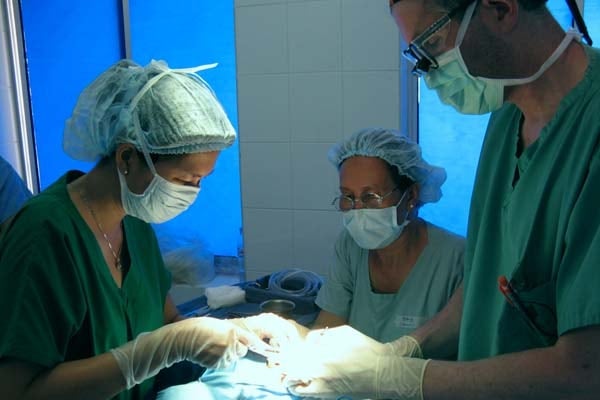
U of T-designed microchip predicts donor lung viability
Published: August 28, 2015
University of Toronto researchers have found a way to quickly determine if a donor lung is suitable for transplant by using a microchip to measure biomarkers – an innovation that could eliminate the leading cause of post-operation death.
Biomarker profiling can reveal damaged tissue at the molecular level. It’s being used in many other areas of medicine to identify disease and damage at very early stages, but up until now, these technologies have been too time-consuming to be used in the fast-paced world of donor organ assessment.
“In the case of lung transplants, surgeons only have a few hours to decide whether the donated tissue will be used,” says Professor Shana Kelley, one of the lead scientists behind this innovation. “The consequences of a wrong call can be significant. Transplanting a damaged lung is very dangerous for the recipient.”
Anywhere from 10 to 25 per cent of lung transplant recipients develop a condition called primary graft dysfunction in the hours or days following surgery – and it’s the leading cause of early death following this operation. Although donated lungs are carefully examined for a variety of defects, standard tests can’t always detect subtle signs of injury that can lead to devastating outcomes. Recent research has shown, however, that certain nucleic acid biomarkers within donor lungs can predict the risk of primary graft dysfunction following surgery. But the existing technologies with the power to identify these biomarkers would need over six hours for the job – time that’s just not available.
University of Toronto thoracic surgery professor and director of the UHN Toronto Lung Transplant Program Dr. Shaf Keshavjee set out to solve this predicament. He wondered if the microelectronic chip sensors devised by Kelley’s lab to rapidly test for infectious diseases could be modified to identify donor lung biomarkers on the spot.

Left: Professor Shana Kelley and University of Toronto thoracic surgery professor and director of the UHN Toronto Lung Transplant Program Dr. Shaf Keshavjee
In a study published today in the journal Science Advances, Kelley and Keshavjee show how they developed fractal circuit sensors to determine in minutes whether a donor lung is at risk for primary graft dysfunction.
“This technology uses a microelectronic chip to detect the molecules within lung tissue that can predict whether a lung will perform well once transplanted,” says Kelley. “When the marker molecules bind to the surface of the chip, an electrical signal is generated, and we can quantitate how much of the marker is present. The marker levels can tell us whether a lung is healthy or may have problems that could cause it to be problematic once transplanted.”
By using the chip to test the levels of several biomarkers simultaneously, and plugging these quantities into an algorithm they developed, the researchers will be able to generate a risk score for the lung. The whole process takes approximately 20 minutes.
As a proof-of-concept study, researchers tested the technology on 52 donor lungs used for transplants. Even though all of the lungs were considered clinically suitable, 19 recipient patients developed primary graft dysfunction. In all of these cases, the fractal circuit sensors would have flagged the risk prior to surgery.
Not only do the researchers expect this technology to cut down on damaged lungs being used for transplants, they also see its potential in reducing the number of discarded lungs.
“Because of the dangers involved in transplanting a damaged lung, transplant surgeons tend to be very conservative,” says Keshavjee. “On average, only 15 per cent of the lungs donated are transplanted. This leads to a shortage of supply, and many patients die while on the waiting list.”
By guiding transplant surgeons away from donor lungs that may look great but are in fact damaged – and pointing them toward others that have a clean molecular profile, despite failing some of the conventional tests – this technology could make a big difference to the field.
Considering the positive findings from this initial study, the researchers will be refining their approach and developing prototypes for clinical use.

